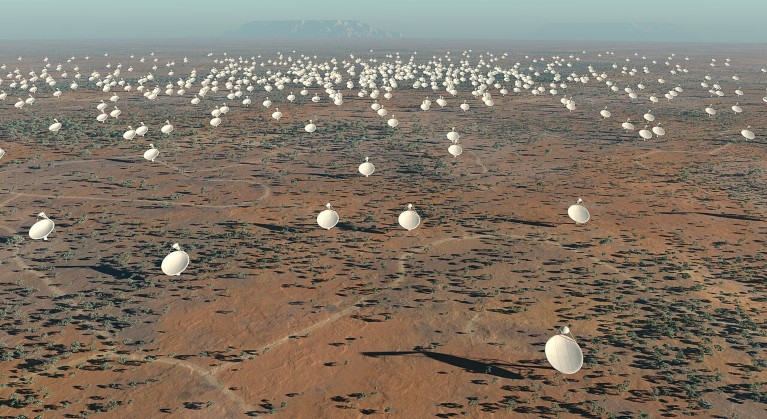
An artist's impression of the central core of the Square Kilometre Array. Credit: SPDO/TDP/DRAO/Swinburne Astronomy Productions
Astrophysicists have used statistical tools to provide new insights into the interaction between dark matter and massive neutrinos1.
This will enhance the understanding of galaxy formation in the early universe, says a team of researchers at the Indian Statistical Institute in Kolkata led by Supratik Pal.
Dark matter (DM) is thought to interact with neutrinos, which tend to flow DM particles away from denser regions of the universe. This affects galaxy formation. The Planck telescope has already shed some light on DM-neutrino interaction and galaxy formation.
To better understand this, the scientists used two powerful statistical tools — the Fisher matrix forecast and Markov chain Monte Carlo algorithm — to predict the precision of observational outcomes from the Square Kilometre Array (SKA), the largest radio telescope in the making, and the recently launched space telescope Euclid. Both will scan the sky and search for signals of DM and DM-neutrino interactions.
The team focused on neutral hydrogen atoms that formed in the early universe and became trapped in DM halos. Their analysis shows that the SKA will capture these atoms’ emissions, which can be used as a tracer of DM and its interaction with neutrinos. Euclid will provide a three-dimensional view of dark matter distribution in the universe.
The researchers say these telescopes will be new ‘eyes’ to look into DM and neutrinos in future cosmological experiments, helping understand the microscopic world in large structures of the universe.
